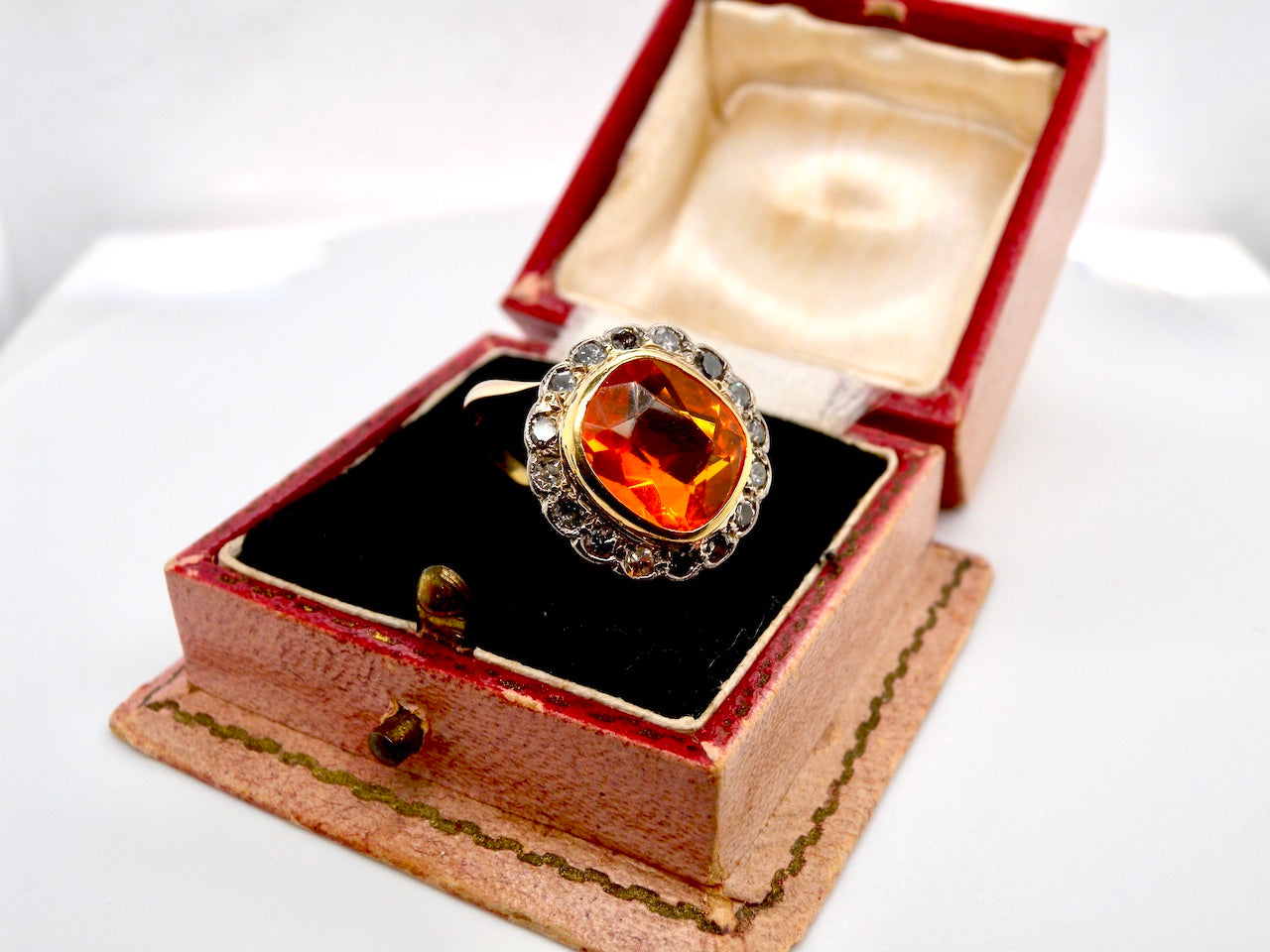There are more than 300 recorded gemstones in the world at present. However, some of the most valuable gems on earth are those which we will never see. Collectors and museums are always on the lookout for these gems, which are attainable with the right amount of money.
Here is an A to Z list of some of the 300+ gemstones in the world that you may or may not be aware of.
Amethyst – a purple, quartz type of stone with a relatively high rating of 8 on the Mohs scale of hardness. Amethyst is the birthstone for February and is believed to turn energy into love and repel bad wishes from others.

Beryl – a mineral made up of a wide range of elements that can result in various varieties, the most well-known being aquamarine and emerald. Beryl is common and is found in huge crops all over the world. Beryl is a strong stone with a rating of 7.5 to 8 on the Mohs scale of hardness.
Chalcedony – a crystalline type of silica, chalcedony is made up of intergrowths of moganite and quartz. It can be transparent or opaque and is believed to have the ability to dissolve negative vibrations and put the mind and heart into balance. Chalcedony is rated 6.5 to 7 on the Mohs scale.
Diamond – one of the most valuable gems in the world, diamonds are sought after for their clarity and beauty. The birthstone for April, diamonds have been used in engagement rings for many years. Diamonds are one of the hardest materials on earth and have a rating of 10 on the Mohs scale of hardness.
Emerald – the birthstone for May, emeralds are stunning, deep green stones, which are found everywhere on earth. Rated about 7.5 to 8 on the Mohs hardness scale makes emeralds perfect for everyday wear, which is why they were extremely popular in mid-century cocktail jewellery pieces such as necklaces and rings.
Fire Opal – these are translucent opals with warm body colours like orange, gold, and yellow, that are found mainly in Mexico, and are frequently referred to as “Mexican fire opals.” These exceptional gems are highly sought-after, but most times, don’t carry high prices, because they are considered by some people to be unlucky.
Garnet – the birthstone for January, garnet is rated 6.5 to 7 on the Mohs scale, and is often used in necklaces, brooches, and earrings, but is not ideal for everyday use. Although garnet is known for its stunning red colour, it is also available in pink and yellow, and the extremely rare green Tsavorite garnet, which is the most prized.
Hackmanite – an incredibly rare type of sodalite, hackmanite changes colour in sunlight, a phenomenon known as “tenebrescence. It is purple in the dark but fades to a greyish white when exposed to sunlight. Found mostly in Quebec, it can be cut and used in jewellery.

Imperial Jade – extremely rare and highly sought-after, Imperial Jade is found in Myanmar, Burma, and is known as the most expensive gemstone on earth, worth even more per gram, than the finest diamond in the world. Called “Imperial Jade” because of its bright colour and translucency, it has been used in ornaments and jewellery all over Japan, China, and the East, for thousands of years.
Jasper – found in colours of yellow, red, green, or brown, jasper is an opaque and impure type of silica, with a rating of 6.5 to 7 on the Mohs hardness scale. Because of its colour variances, it was popular with jewellery craftsmen in the mid-century.
Kashmir Sapphire – also known as Neelam, Kashmir sapphires are the best type of blue sapphires and are extremely popular because of their deep, blue colour. First sourced from sapphire mines in Kashmir in the 18th century, these gems later became highly sought-after in all corners of the globe. Kashmir sapphires are exceptionally rare, with the highest price for one of these gemstones reaching an incredible $180,731 per carat!
Lapis – prized for its intense blue colour dotted with gold flecks, lapis lazuli is a semi-precious stone that was used in the death mask of Tutankhamen. It is now known that it was widely used in Ancient Egypt. Mined at first in Afghanistan about 6000 years ago, lapis does dry out ad break down after thousands of years, which is why pieces this old can only be seen in museums.
Morganite – coloured by caesium or manganese, morganite is a pink variety of beryl and forms naturally in crystals and masses. It is rated 7.5 to 8 on the Mohs scale, making it ideal to be worn every day. Although it comes in various warm colours, morganite is most popular in pastel pink or purple, which is a beautiful delicate shade, perfect for use in different types of jewellery.
Nephrite – usually found in green, nephrite is made up of magnesium calcium, and iron-rich, amphibole minerals. This makes it one of two distinct types of minerals associated with jade. With a rating of 6.5 to 7 on the Mohs scale, is hard enough to use in jewellery, but is not ideal for everyday use.
Olivine – the name of a group of rock-forming minerals found in igneous rocks, olivine is yellow to yellow-green in colour. Seen in rock formations such as gabbro, peridotite, and basalt, all over the world, makes olivine a relatively common type of gem.
Pearl – although not technically a gemstone, pearls, the birthstone for June, are found inside oysters and can be natural, in either salt or freshwater, or cultured pearls grown on farms. It is believed that pearls bring peace, luck, and love, and are frequently associated with female power and wealth.
Quartz – made of oxygen and silicon, quartz is a common chemical compound that is also referred to as silicon oxide. Quartz, with its system of hexagonal crystals, is a hard, crystalline mineral that appears in just about every colour, as well as colourless, making it perfect for use in any type of jewellery.
Roselite – found only in Mexico, roselite is a pink gemstone that is actually a rare type of garnet. With a rating of 6.5 to 7 on the Mohs scale, roselite cannot be worn every day but is still used to make exceptionally beautiful occasional or cocktail jewellery pieces.
Spinel – found mainly in pink, spinel is also popular in red, blue, and purple. However, pure spinel is colourless. Depending on the variety, it is rated 7.5 to 9 on the Mohs scale. Found in Myanmar, Afghanistan, and Sri Lanka, it has excellent clarity and stunning properties, making it incredibly popular in jewellery.
Tanzanite – a blue-violet type of mineral, with the colour due to tiny amounts of vanadium, tanzanite is named after Tanzania, the country in Africa where it is found. One of the birthstones for December it is also relatively popular with people worldwide. It is brown in its rough state but is treated to bring out the blue-violet shade. Umbalite – a member of the garnet family, umbalite is named after the place where it is mined in Tanzania. It comes in colours ranging from pink through to red-violet, and being rare and expensive, makes absolutely beautiful items of jewellery.
Umbalite – a member of the garnet family, umbalite is named after the place where it is mined in Tanzania. It comes in colours ranging from pink through to red-violet, and being rare and expensive, makes absolutely beautiful items of jewellery.
Verdelite – verdelite is a green tourmaline mineral that comes in a wide range of colours, from blue and green to pink and red. It is thought to diminish fear and enhance self-confidence, so many people wear it around the neck as a raw crystal, to enjoy these properties.
Watermelon Tourmaline – this stone is pink in the middle and green around the edges, similar to the colours of watermelon, and is rated 7 to 7.5 on the Mohs hardness scale. Watermelon tourmaline, because of the colour contrast, is most sought after, even though it is common for the gem to have more than one colour.
Xanthite – a yellow-brown stone, xanthite is a member of the tourmaline family that’s found in the USA. Rich in manganese, xanthite has a rating of 7 on the Mohs scale, which makes it ideal to use in jewellery.
Yellow Citrine – a stunning stone frequently used in jewellery, due to it being named a summer birthstone. It is extremely popular in pendants and rings since it is believed to bring clarity, optimism, and enlightenment.

Zircon – a gemstone of many colours that has been used for thousands of years, transparent, clear zircon, has recently been used as imitation diamonds since they are normally less expensive and can be easily manufactured in a laboratory. With a rating of 7.5 on the Mohs scale, it is still safe to wear zircon jewellery every day.
Gemstones have played a huge part in the diversication of jewllery making for as long as time can be remembered. As a result we all have been fortunate to benefit from these years of craftmanship. This short guide is just a small sample of the 300+ recognized gemstones known today. You can find more info on the gem society
You may like to browse our collections of fine antique and vintage jewellery



